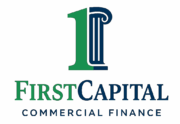What is Factoring?
It’s a whole lot easier to answer this question for business then it is for algebra! Although some people speak to great depths to explain invoice factoring the essence is quite simple.
Factoring is a financial transaction where a business owner sells invoices (accounts receivable) to a third party (called a factor).
The process is not considered a loan so the company selling invoices is not incurring additional debt. The invoice is sold at a slight discount to a factor.
Why Would a Business Sell Invoices?
When a company creates an invoice for goods or services, the customer often takes 20, 30 or even 60 days to pay. During that time the company still has to pay payroll and other bills – all the while waiting to get paid on the invoices that are out there.
A Factor is able to give a company a lump sum of cash, upfront, for the yet-to-be-paid invoice. This helps the company continue to make payroll, pay other bills, or even expand their business.
What is the Process?
The “life” of the invoice can basically be broken down into four areas.
- Submit Invoice to Customer
- Send Invoice to Factoring Company
- Advance Made By Factor
- Invoice Paid and Reserve Released
Step One: The “Factor” is not involved*. It is the normal day-to-day of a company creating an invoice on goods or services. If the company does not factor the invoice, they would simply have to wait the 30 or 60 days for the invoice to be paid.
*There are “full service” finance companies that will assist in this phase, even if the company will not be factoring the invoice.
Step Two: Once the product has been delivered to the customer and the invoice created, the business may deliver a copy of the invoice to the Factor. The Factor will verify the goods were delivered or the services performed.
Step Three: Once the Factor has verified the invoice (Step Two) the Factor funds the company a percentage of the invoice. The amount of the “advance” varies company to company but is largely based on the credit performance of the paying customer (debtor)…not the company selling the invoice (creditor).
Most funding occurs within 24-48 hours of the Factor receiving the invoice submission on an approved customer.
Step Four: The Factor collects the money from the payer – at whatever terms were initially agreed upon (pay in 30 days, etc.).
Special note: Typically there is a reserve amount during a funding. For example, if the invoice amount is $1000, the Factor may agree to pay $940 for it. They will fund $800 up front (within 48 hours) and “release” the remaining $140 held in reserve when the invoice has been paid in full.
Types of Factoring
There are many types of factoring out there, for just about every type of business. Some types include:
- Medical factoring
- Freight Bill Factoring
- Transportation or Trucking Factoring
- Small Business Factoring
- Construction Factoring
- Spot Factoring
- Recourse and Non Recourse Factoring
- Credit Card Factoring
What is “Recourse” Factoring?
Many factors in the past used a process called recourse. It simply meant that if the invoice was not paid for some reason the Factor had “recourse” to come back to the company that sold the invoice for the debt collection. Although recourse still exists (particularly for some “high risk” industries) for the most part, most Factors purchases invoices without recourse.
Need help with how you can Factor your Receivables?
If you are interested in discussing factoring or wish to sell your receivable invoices to get the Working Capital your business needs, give us a call at (800) 497-7701, Monday-Friday, 8AM-5PM Central Time. You can also visit our website for more information at: https//firstcapitalcf.com/invoice-factoring/ now.
